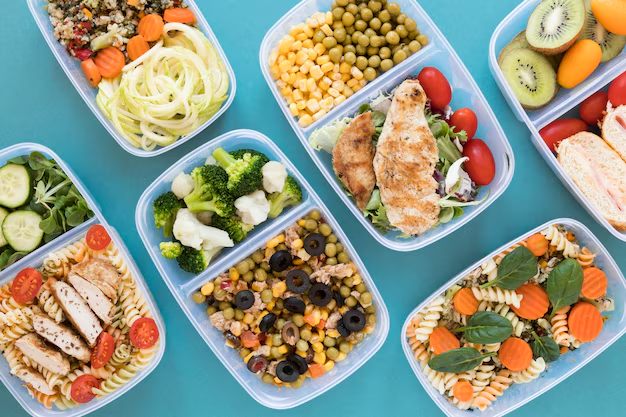Understanding the Shelf Life of Factor Meals in Your Refrigerator
If you've ever enjoyed the convenience of meal delivery services, you likely appreciate the appeal of Factor meals. These pre-prepared meals help you maintain a balanced diet without the hassle of cooking from scratch. But, like all ready-to-eat food, it's crucial to know how long they can be safely stored. Let's delve into how you can maximize the freshness and safety of your Factor meals by storing them properly in your refrigerator.
How Long Can Factor Meals Stay Fresh in the Refrigerator?
Factor meals are shipped fresh, not frozen, meaning they have a limited shelf life compared to frozen alternatives. Typically, these meals can last in the refrigerator for about 4 to 7 days. However, this range can vary depending on several factors, which include the type of meal, the ingredients used, and how well your refrigerator maintains its temperature.
Ensuring your fridge is operating at the optimal temperature, which is usually around 37°F (3°C), can help extend the shelf life of your food. Temperatures that fluctuate above 40°F (4°C) can accelerate spoilage.
Important Tips for Storing Factor Meals
- Check Labels: Always refer to any use-by dates or specific storage instructions provided with the meals.
- Keep Consistent Temperature: Ensure your refrigerator maintains a stable, cold temperature.
- Avoid Overcrowding: Allow for adequate air circulation by not overcrowding your fridge with too many items.
- Sealed Packaging: Ensure that the meal packaging remains sealed until you're ready to eat them.
Factors Influencing the Shelf Life of Pre-Prepared Meals
Several factors can affect how long your Factor meals last, extending beyond mere refrigeration. Understanding these factors can help you make informed decisions about consumption and storage.
Ingredients and Composition
Meals with high moisture content or those that include seafood or dairy may spoil faster than items like pasta dishes or grain-based meals. These ingredients can harbor bacteria if not stored correctly.
Packaging and Vacuum Sealing
The packaging method significantly influences shelf life. Many Factor meals are vacuum-sealed, which helps preserve their freshness longer by reducing exposure to oxygen, a contributor to spoilage.
Storage Conditions
Consistent refrigeration is key. If your meals are in transit for extended periods or left out at room temperature, it could compromise their longevity. Always refrigerate meals promptly upon receipt.
Food Safety Practices
Practice good food safety habits by washing your hands before handling meals, using clean utensils, and keeping your refrigerator clean.
💡 Maintaining Freshness: Practical Tips
To ensure your meals stay as fresh and safe as possible, follow these practical tips:
- 🧊 Refrigerate Promptly: Always store your meals in the fridge immediately upon delivery.
- 🌡️ Monitor Fridge Temp: Regularly check the temperature settings of your refrigerator.
- 🔄 Rotate Stock: Consume meals in the order of their delivery or purchase.
- 📅 Note Dates: Keep track of when meals were received and mark them with the expected discard date for easy tracking.
Can You Freeze Factor Meals?
One way to extend the shelf life of your meals is to freeze them. While Factor recommends consuming their meals fresh given they're designed for convenience and immediate use, freezing is feasible if you can't consume them by their expiration date.
How to Freeze Meals Properly
- Transfer Packaging: If the original packaging isn't freezer-safe, transfer your meal to a freezer-safe container.
- Label Clearly: Mark the meals with the date of freezing to keep track.
- Maintain Freezer Temperature: Ensure your freezer is set at 0°F (-18°C) to maintain food quality and safety.
- Defrost Safely: When ready to eat, defrost meals in the refrigerator overnight rather than at room temperature to ensure even thawing.
The Importance of Food Safety
Understanding and practicing food safety is crucial when handling any ready-to-eat meals. Consuming spoiled food can lead to foodborne illnesses, which are uncomfortable and may require medical attention.
Signs of Spoilage
Look out for these signs to determine if your meals may be past their prime:
- Unusual Odor: Any off or sour smell may indicate spoilage.
- Textural Changes: Slimy textures or visible mold are clear signs of contamination.
- Color Changes: Discoloration can be an indicator of spoilage or degradation.
If you notice any of these signs, it's best to err on the side of caution and dispose of the meal.
Practical Storage Summary: Your Go-To Checklist
Here's a handy checklist to keep your Factor meals in top condition:
- 🧊 Refrigerate Immediately upon delivery
- 🌡️ Regularly Check your fridge temperature
- 🏷️ Label Meals with received and “use by” dates
- ❄️ Freeze If Necessary for extended storage
- 📏 Monitor Packaging integrity before storage
Staying Safe and Satisfied with Pre-Prepared Meals
By understanding the nuances of storing Factor meals, you can enjoy the convenience and nutrition they offer without worry. Mindful storage, vigilance about spoilage, and clear labeling for dates are all small steps that ensure your meals serve their purpose — providing nourishment conveniently and safely.
So, the next time you're assessing your fridge contents and wondering how long your Factor meals will last, remember the factors discussed in this guide. By adhering to these best practices, you can effectively manage your stock of pre-prepared meals and reduce waste while maximizing their benefits. Enjoy your meals with confidence, knowing you're equipped to make informed storage decisions!
